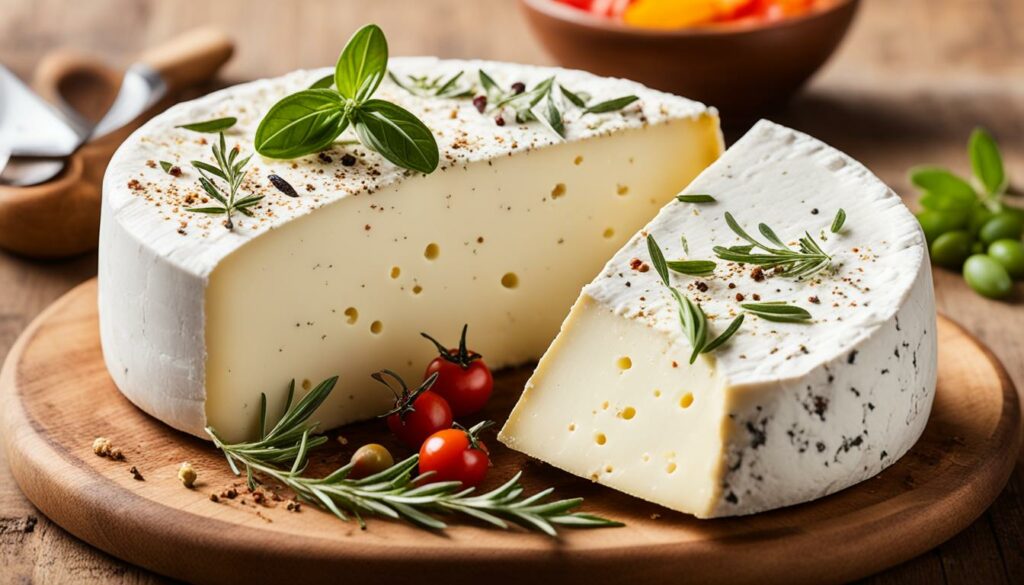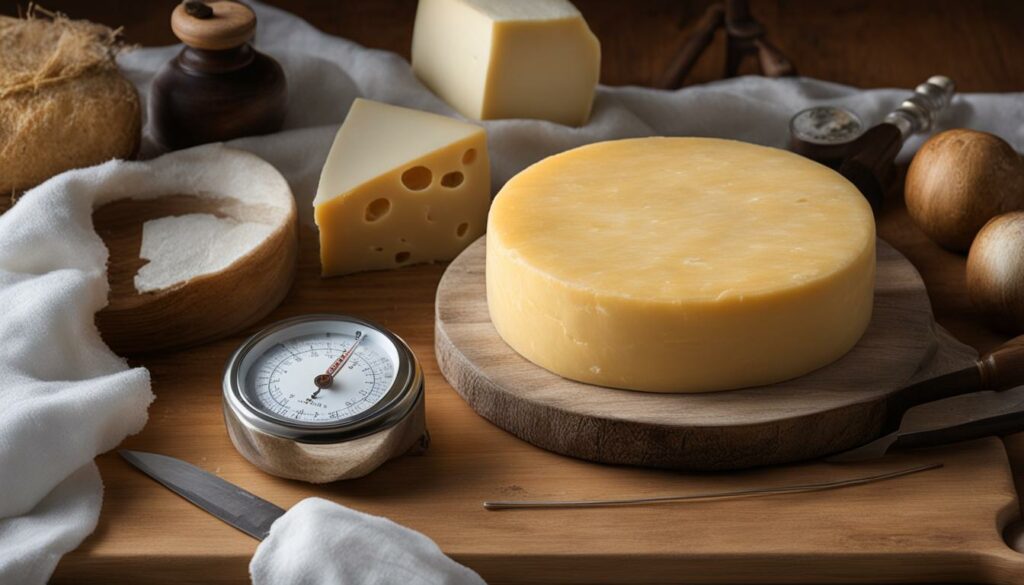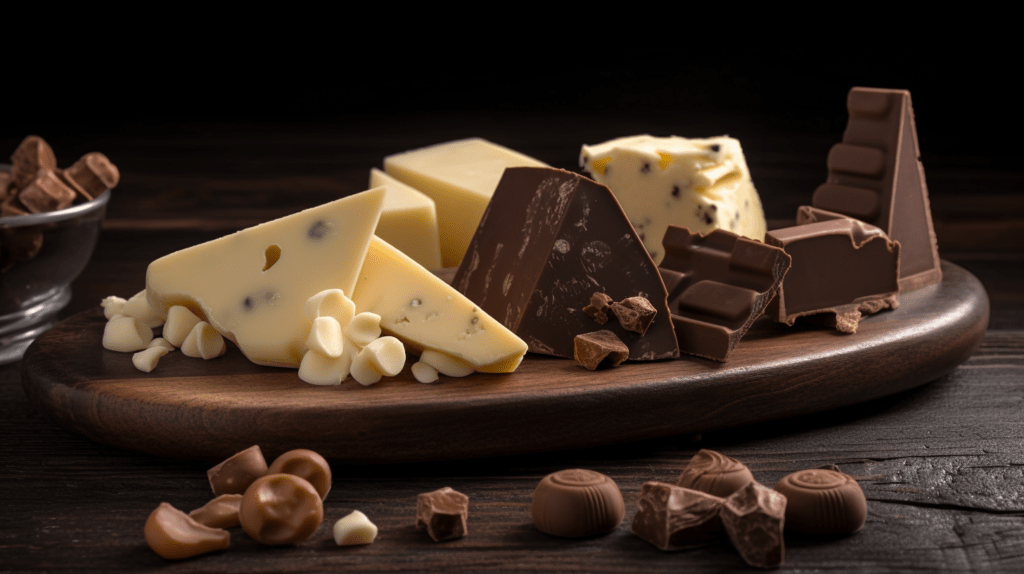Indulge in the exquisite taste of Beyaz Peynir cheese, an iconic Turkish white cheese that has become a beloved and popular choice in Turkey. Made from the finest sheep’s milk, this creamy white cheese offers a delightful Mediterranean flavor that will tantalize your taste buds. Not only is Beyaz Peynir a traditional Turkish cheese, but it is also a healthy and versatile option for various culinary creations. Whether you enjoy it on its own, crumbled over salads, or paired with olives and bread, this savory cheese is sure to elevate your dining experience.
The Rich Culinary Heritage of Ottoman Cuisine
Ottoman cuisine is renowned for its lavish and bountiful cooking, rooted in a rich culinary heritage. The Ottomans had a deep appreciation for the freshest ingredients, both home-grown and imported. Gourmet meals, consisting of multiple courses, were a common practice among the ruling classes.
Today, the culinary traditions of the Ottoman Empire continue to inspire the Mediterranean cuisine found in Turkey. This cuisine emphasizes the use of pulses, meat or fish, fresh vegetables, salads, fruits, and cheeses. The flavors and ingredients reflect the heritage of Ottoman cooking, which blended various culinary influences from the regions under Ottoman rule.
Olive oil is a staple in Ottoman cuisine and plays a vital role in both cooking and dressing salads. Turkish olive oil, known for its exceptional quality, adds a distinct flavor and richness to dishes.
The Ottoman diet showcased a keen appreciation for healthy Mediterranean cuisine. Turkish cuisine incorporates nutritious ingredients while still offering indulgent flavors. The use of olive oil, alongside an abundance of fresh produce and lean proteins, ensures a balanced and wholesome approach to gastronomy.
Turkish tea and Turkish coffee are quintessential to the social rituals that accompany Ottoman cuisine. These beverages serve both as a connection to tradition and as an integral part of the culinary experience. Turkish tea, known as çay, is black tea served in delicate glasses and is often enjoyed with delicious Turkish desserts.
The Ottoman culinary heritage also extends to the appreciation of wine. Turkey has a long history of winemaking, dating back thousands of years. Turkish wines, including traditional grape varieties and modern blends, perfectly complement the flavors of Turkish cuisine.
Experience the opulence and cultural significance of Ottoman cuisine by exploring its diverse flavors, lavish cooking styles, and culinary traditions. Immerse yourself in the vibrant blend of Mediterranean ingredients, indulge in gourmet meals, and engage in the social rituals that have shaped the delightfully rich and healthy cuisine of Turkey.

Sample Table: Ottoman Cuisine Ingredients
| Category | Ingredients |
|---|---|
| Pulses | Lentils, chickpeas, beans |
| Meat | Beef, lamb, poultry |
| Fish | Sea bass, mackerel, sardines |
| Vegetables | Eggplant, peppers, zucchini |
| Salads | Tomatoes, cucumbers, lettuce |
| Fruits | Pomegranates, figs, apricots |
| Cheeses | Beyaz Peynir, Feta, Kashkaval |
| Olive Oil | Extra virgin olive oil |
| Herbs and Spices | Mint, parsley, paprika, cumin |
Cheese in Turkish Culture
Turkish cheeses hold great significance in Turkish culture, playing a vital role in the country’s culinary traditions. While Ottoman cuisine often takes the spotlight, local cheeses are an essential part of Turkish gastronomy, adding depth and flavor to various dishes. Cheese production in Turkey encompasses a wide range of practices, from small-scale farm-made cheeses to commercial productions.
One of the most renowned Turkish cheeses is beyaz peynir, commonly known as white cheese. Reminiscent of Greek Feta cheese, beyaz peynir is a versatile and beloved cheese across Turkey, regularly featured in Turkish breakfasts. Turkish breakfasts are known for their abundance and variety, often accompanied by cheese, olives, cucumbers, and eggs. This cultural tradition highlights the significant role that cheese plays in Turkish cuisine.
Local Cheese Varieties and Turkish Cheese Traditions
In addition to beyaz peynir, Turkey boasts a diverse array of local cheese varieties. Each region in Turkey has its own traditional cheeses, contributing to the culinary tapestry of the country. These regional specialties celebrate the unique flavors and characteristics of local ingredients and traditional cheese-making techniques.
When exploring Turkish cheese culture, you may come across various cheese terms. For instance, cara refers to whey cheese, çökelek denotes curd cheese, lor represents cottage cheese, and testi peynir refers to cheese aged in goat skin or ceramic containers.
In Turkish culture, cheese has deep-rooted traditions and symbolism. It symbolizes abundance, prosperity, and hospitality, and is a key ingredient in various celebratory meals and festivals.
Preserving Cheese-Making Traditions
While globalization and industrialization have introduced commercial cheeses to Turkey, there is an ongoing effort to preserve and promote the production of artisanal and traditional Turkish cheeses. Farm-made cheeses and cheeses made by nomadic peoples continue to be cherished in various regions.
These traditional cheese-making methods not only produce unique flavors but also support local communities and sustainable practices. By embracing farm-made and traditional cheeses, Turkish culture ensures the preservation of centuries-old cheese-making traditions.
Turkish Cheese and the Mediterranean Table
The rich and flavorful Turkish cheeses are a staple on the Mediterranean table. Whether enjoyed in traditional Turkish breakfasts or as part of a mezze spread with olives and bread, Turkish cheeses enhance the dining experience with their savory profiles and creamy textures.
The Mediterranean diet, known for its health benefits, often incorporates cheeses, olives, and other wholesome ingredients. Turkish cheese traditions align perfectly with the Mediterranean culinary philosophy, contributing to the overall appeal and popularity of Turkish cheeses worldwide.
Cheese for Breakfast – A Turkish Tradition
In Turkish culture, cheese is a staple of the breakfast table. Turkish breakfasts typically include a variety of cheeses, with beyaz peynir being a common choice. Alongside freshly baked bread, olives, tomatoes, and cucumbers, cheese forms an integral part of a hearty and wholesome Turkish breakfast. Turkish breakfast rituals include pairing cheese with olives, enjoying it with butter, honey, crusty bread, and freshly brewed Turkish tea. This long-standing tradition has been cherished by Turkish families for generations.
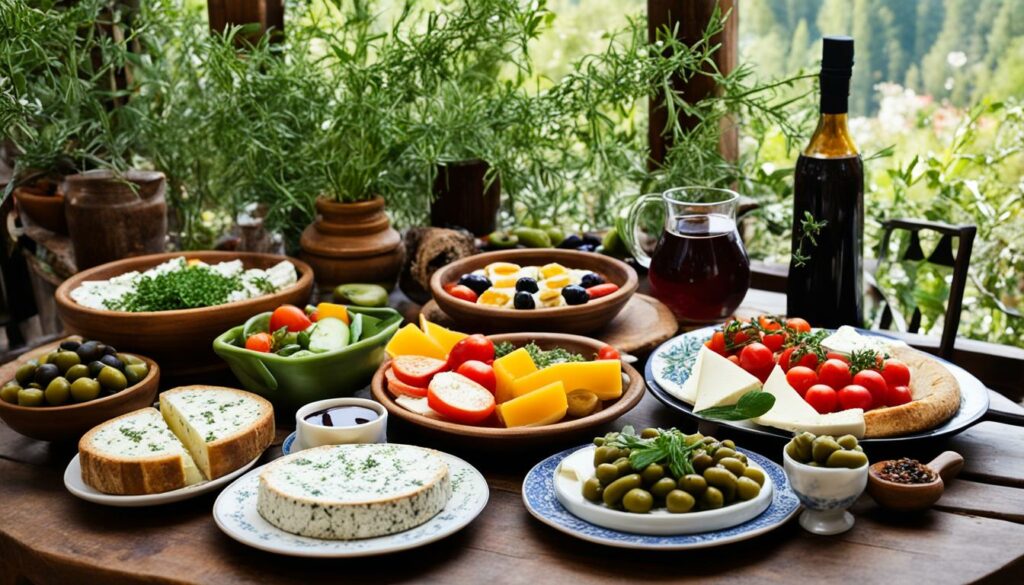
When it comes to breakfast, Turks take it seriously. A Turkish breakfast, known as “kahvaltı,” is a leisurely and communal affair that brings family and friends together. It is a time to savor delicious flavors, enjoy lively conversations, and kickstart the day with a wholesome meal.
At the heart of a Turkish breakfast spread is cheese. The Turkish love affair with cheese is evident in the wide variety of cheeses that grace the breakfast table. From mild and creamy to tangy and savory, there is a cheese to suit every palate.
Pairing Cheese with Olives
One of the most beloved combinations in Turkish breakfast is cheese and olives. The salty and tangy flavors of olives complement the creamy richness of cheese, creating a delightful harmony of taste. Whether it’s the succulent green olives or the briny black ones, they blend perfectly with the diverse flavors and textures of Turkish cheeses.
“In Turkey, we have a saying: ‘Cheese without olives is like a day without sunshine.’ It just goes to show how integral the pairing of cheese and olives is to our breakfast rituals.” – Ahmet, a Turkish breakfast enthusiast
Alongside cheese and olives, Turkish breakfast spreads also feature an array of other delicious components. Freshly baked bread, known as “ekmek,” is a staple that provides the perfect vessel for enjoying the cheese and olives. Tomato slices, cucumber slices, and boiled eggs complete the ensemble, adding refreshing elements to the breakfast plate.
To enhance the flavors further, the cheese can be enjoyed with accompaniments such as butter, honey, and jam. A dollop of creamy butter on crusty bread adds richness, while a drizzle of honey provides a touch of sweetness. Traditional jams made from fruits like cherries, apricots, and figs bring vibrant flavors to the breakfast spread.
The Ritual of Turkish Breakfasts
Turkish breakfasts are more than just a meal; they are a cultural experience. Families gather around the table, spending quality time together, and reconnecting before starting the day. The leisurely pace allows for meaningful conversations and laughter, creating cherished memories.
The art of sipping Turkish tea, or “çay,” is an essential part of the breakfast ritual. This strong, black tea is served in small tulip-shaped glasses and is sipped slowly as conversations flow. The tea complements the flavors of the cheese and olives, balancing the richness and invigorating the senses.
With its emphasis on fresh ingredients, rich flavors, and communal spirit, Turkish breakfast is more than just a meal. It is a time-honored tradition that celebrates the beauty of simplicity. So next time you sit down for breakfast, embrace the Turkish way and indulge in a breakfast spread that includes the delightful combination of cheese, olives, and Turkish tea.
Culinary Versatility of Beyaz Peynir
When it comes to culinary versatility, Beyaz Peynir is a true superstar. This Turkish white cheese offers a multitude of uses that can elevate your dishes and tantalize your taste buds. Whether you’re looking to add a touch of savory flavor to your salads or create delectable pastries with a rich cheese filling, Beyaz Peynir has got you covered.
Here are some exciting ways to incorporate this versatile cheese into your culinary adventures:
Crumble Beyaz Peynir Over Salads
Give your salads a burst of flavor and a creamy texture by crumbling Beyaz Peynir on top. The salty and tangy notes of the cheese beautifully complement fresh greens and vibrant vegetables, creating a mouthwatering combination that will leave you craving for more.
Try Beyaz Peynir as a Pastry Filling
Take your pastries to a whole new level by using Beyaz Peynir as a filling. The rich and creamy cheese adds a delightful richness to both sweet and savory pastries. Whether it’s a flaky cheese croissant or a cheesy puff pastry, the possibilities are endless.
Pair Beyaz Peynir with Olives and Bread
For a quick and satisfying snack, pair Beyaz Peynir with olives and fresh bread. The combination of the creamy cheese, briny olives, and crusty bread creates a harmonious blend of flavors and textures that will transport you to the Mediterranean.
Discover a World of Versatile Cheese Options
Beyaz Peynir is just one example of the versatile cheese options that Turkish cuisine has to offer. From mild and creamy to sharp and tangy, Turkish cheeses come in a variety of flavors and textures that can cater to every palate. Whether you’re a cheese connoisseur or an adventurous foodie, exploring Turkish cheese varieties will open up a whole new world of taste sensations.
So go ahead, let your culinary creativity run wild and experiment with Beyaz Peynir’s versatility. Whether you’re crumpling it over a salad, stuffing it into a pastry, or pairing it with olives and bread, this Turkish cheese is sure to delight your taste buds and elevate your dishes to new heights.
| Versatile Uses of Beyaz Peynir | Description |
|---|---|
| Crumbling over salads | Adds a savory flavor and creamy texture |
| Filling for pastries | Creates a rich and delightful taste |
| Pairing with olives and bread | Offers a quick and satisfying snack option |
| Exploring other Turkish cheese varieties | Opens up a world of flavors and textures |

With its culinary versatility and irresistible flavors, Beyaz Peynir is a cheese that can truly transform your dishes. So why not embrace the endless possibilities and embark on a culinary adventure with this delectable Turkish delight?
Turkish Cheese – A Worldwide Favorite
Turkish cheese, including beyaz peynir, has gained international recognition for its unique flavors and textures. In Greece, beyaz peynir is known as Feta cheese, highlighting its popularity across different cultures. Many Middle Eastern countries also have their own names for white cheese, showcasing its widespread appeal. People from around the world appreciate the distinct taste and qualities of Turkish cheeses, making them a popular choice in international cuisines.
Key highlights:
- Beyaz peynir, a Turkish cheese, is internationally recognized.
- In Greece, beyaz peynir is known as Feta cheese, emphasizing its popularity.
- Middle Eastern countries have their own names for white cheese, reflecting its widespread popularity in the region.
- Turkish cheese varieties are appreciated by people from different cultures, contributing to their international acclaim.
With their rich flavors and versatile uses, Turkish cheeses have captivated the palates of cheese enthusiasts worldwide. The international appreciation for Turkish cheese varieties speaks to their outstanding quality and culinary appeal.
So why are Turkish cheeses loved across the globe? Let’s explore the factors that contribute to their popularity:
“Turkish cheese varieties offer a tantalizing range of flavors and textures that captivate cheese enthusiasts worldwide.”
Firstly, beyaz peynir, known as Feta cheese in Greece, has become synonymous with Turkish cheese due to its rich and tangy taste. This popularity has propelled it into international kitchens, where it is now widely used in various dishes.
The Middle Eastern region also holds a deep appreciation for white cheese. Each country has its own name and variations, showcasing the widespread love for this cheese variety.
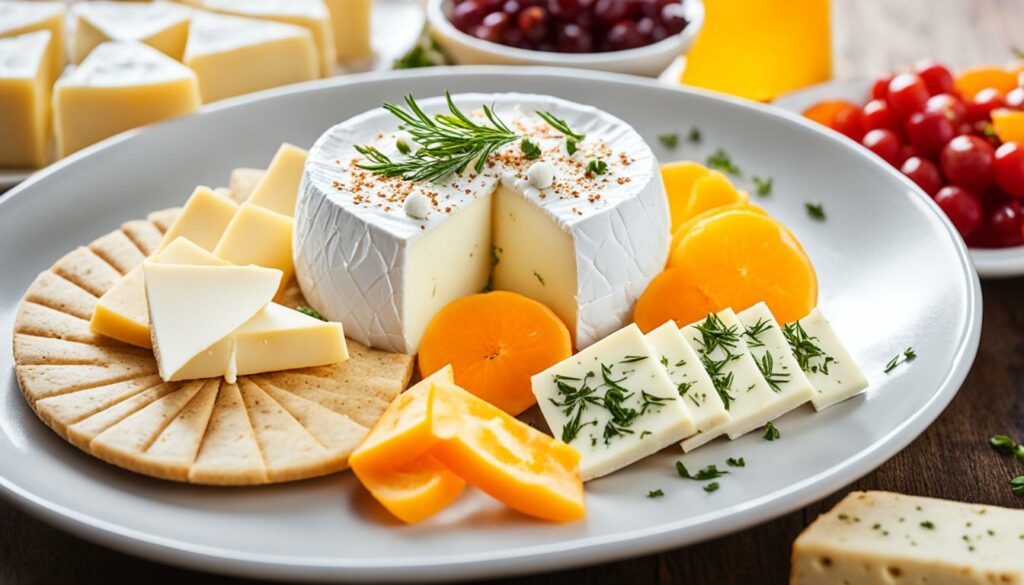
Turkish Cheeses – A Culinary Journey
The history of cheese traces back to Mesopotamia, and Turkish cheese has its unique place in Turkish cuisine. With over 100 types of cheese produced in Turkey, there is a vast array of flavors and textures to explore. Turkish cheeses are categorized into groups such as kasar, tulum, mihaliç, lor, and white cheese. Each region in Turkey has its own traditional cheese specialties, showcasing the diverse cheese culture of the country. From Ezine white cheese to Divle Obruk cheese and Mihalıç cheese, Turkish cheeses offer a culinary journey through time and taste.
One of the oldest recorded cheese varieties, Turkish cheese has a rich history dating back to ancient times. Mesopotamia, located in the region that is now modern-day Turkey, is considered the birthplace of cheese. The nomadic tribes who thrived in the fertile lands of Mesopotamia were the first to discover the art of cheesemaking. Over the centuries, this knowledge spread across the region, resulting in the development of diverse cheese varieties in Turkey.
Today, Turkish cheeses are renowned for their unique flavors and textures. They are made from various types of milk, including sheep, goat, and cow. Each cheese variety offers a distinct taste profile, ranging from mild and creamy to tangy and sharp. Some popular types of Turkish cheeses include:
- Ezine white cheese: A crumbly and tangy cheese with a salty flavor. It is often enjoyed as a breakfast cheese.
- Tulum cheese: A traditional Turkish cheese aged in goat or sheepskin bags, resulting in a strong and robust flavor.
- Mihalıç cheese: A creamy and mild cheese made from cow’s milk, perfect for melting and grilling.
- Lor cheese: A soft and fresh cheese, similar to ricotta, which can be used in both sweet and savory dishes.
The regional cheese specialties in Turkey are a testament to the country’s rich cheese culture. Here are a few examples:
| Region | Cheese Specialty |
|---|---|
| Eastern Anatolia | Kars gravyer cheese: A hard and aged cheese with a nutty flavor, often grated and used as a topping in dishes. |
| Aegean Region | Ayvalık tulum cheese: A smoked cheese with a unique flavor, aged in goat skin bags. |
| Mediterranean Region | Divle Obruk cheese: A slightly salty and crumbly cheese, made from sheep’s milk and aged in special wooden barrels. |
Embark on a culinary journey through the diverse world of Turkish cheeses and savor the centuries-old traditions and flavors that make them truly special.
Conclusion
Turkish cheese, particularly beyaz peynir, is a true delight that embodies the culinary heritage, diversity, and richness of Turkish cuisine. From its roots in Ottoman traditions to its international recognition, Turkish cheese offers a wide range of flavors, textures, and culinary possibilities. Whether enjoyed as part of a traditional Turkish breakfast or explored in creative dishes, beyaz peynir’s versatility and unique taste make it a beloved cheese around the world.
Embrace the flavors of Turkish cheese and enhance your dining experience with the timeless delights it brings to your table. Discover the pleasure of savoring Turkish cheese delights, and let your taste buds embark on a journey through the rich culinary history of Turkey. With its international acclaim, Turkish cheese has firmly established its place in the global food scene, captivating cheese enthusiasts and connoisseurs alike.
Indulge in the diverse range of Turkish cheeses, from the tangy flavors of Ezine white cheese to the distinctive taste of Divle Obruk cheese. With over 100 types of cheese produced in Turkey, each region offers its own unique specialties, showcasing the country’s diverse cheese culture. Let the versatility of beyaz peynir inspire your culinary creations, whether you crumble it over fresh salads or use it as a flavorful filling for pastries.
Join the global appreciation for Turkish cheeses, and experience the international recognition they have garnered. Turkish cheese, a staple of Turkish culture and breakfast traditions, has expanded its reach to become a favorite in international cuisines. Elevate your cheese experience with Turkish cheese delights and celebrate the culinary heritage and culinary diversity that they represent.
FAQ
What is beyaz peynir cheese?
Beyaz peynir cheese, also known as Turkish white cheese, is a traditional and popular cheese in Turkey. It is made from sheep’s milk and has a creamy white color.
What makes beyaz peynir a healthy cheese option?
Beyaz peynir is a healthy cheese option due to its use of sheep’s milk, which is rich in nutrients. It is also lower in lactose compared to cow’s milk cheese and provides a good source of protein and calcium.
How can I incorporate beyaz peynir cheese into my meals?
Beyaz peynir cheese is a versatile cheese that can be crumbled over salads, used as a filling for pastries, or enjoyed with olives and fresh bread. Its savory flavor and creamy texture make it a delightful addition to various dishes.
What are some other types of Turkish cheeses?
Turkish cheeses come in a wide variety, with each region having its own traditional specialties. Some examples include kasar, tulum, mihaliç, lor, and testi peynir.
Can beyaz peynir cheese be enjoyed as part of a Turkish breakfast?
Yes, beyaz peynir cheese is commonly enjoyed as part of a traditional Turkish breakfast. It can be paired with olives, tomatoes, cucumbers, and freshly baked bread to create a hearty and wholesome meal.
Why is Turkish cheese internationally recognized?
Turkish cheese, including beyaz peynir, has gained international recognition for its unique flavors and textures. It is appreciated in different cultures around the world, with Greek Feta cheese being a well-known variant of beyaz peynir cheese.
How many types of Turkish cheeses are there?
There are over 100 types of Turkish cheeses, with each offering its own distinct flavors and textures. Turkish cheeses are categorized into groups such as kasar, tulum, mihaliç, lor, and white cheese.
What is the culinary heritage of Turkish cheese?
Turkish cheese has a rich culinary heritage that traces back to ancient times, with cheese production and consumption deeply ingrained in Turkish culture. It reflects the diversity and richness of Turkish cuisine.

